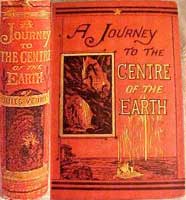

The Earth was still so hot in itself that its innate temperature dominated" as Figuier writes in his textbook. The heat necessary to keep the forest alive comes from "the excessive heat of the globe.

Verne's imaginary forest growing along the "Lidenbrock Sea" was similar to the fossil forests of the Carboniferous period. Some passages and scenes in Verne's novel, like the battle between an ichthyosaur and a plesiosaur witnessed by the travelers, was likely inspired by an illustration in Figuier's book. From Verne's surviving correspondence with his publisher, we know that he started to work on his novel sometimes between January to August 1864.

In 1864 Figuier published La Terre avant le déluge, a popular science book discussing geology and paleontology. So Lindenbrock and his nephew traveled to Iceland, employed a local guide, and following the document's coded directions, entered the volcanic crater.Īn important source of inspiration to Verne were the books by the French scientist and writer Louis Figuier. This (fictional) 16th-century alchemist described a journey into a large system of volcanic conduits, accessible from the crater of the Icelandic volcano Snæfellsjökull. In the opening chapters of the novel, the German Professor Otto Lidenbrock and his nephew Axel discover an ancient document, written by Snorri Sturluson. Journey to the Center of the Earth was published in 1864 and was immediately a critical success, and has remained in publication in both French and English to this day. One hundred and fifty years after Verne's visions, humans have walked on the moon, nuclear submarines can travel under the sea and we have started to explore the mysteries of the deep earth. Novelist Jules Verne was born on February 8, 1828, in the French city of Nantes. Today he is known as a pioneer of the science-fiction genre, imagining a submarine traveling twenty thousand leagues under the sea, a space projectile heading to the moon and a fantastic journey into the depths of our world.


 0 kommentar(er)
0 kommentar(er)
